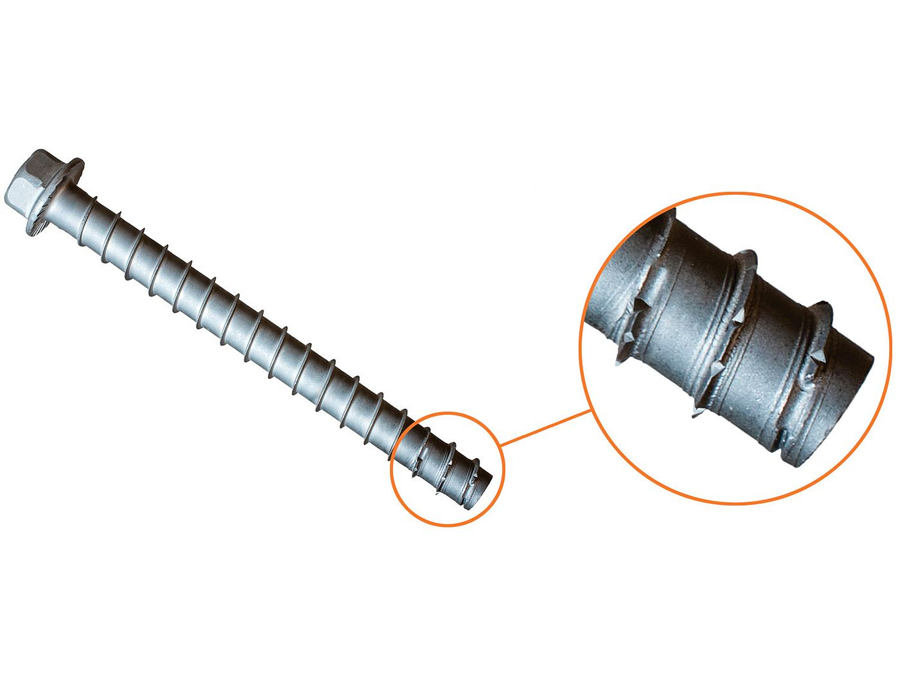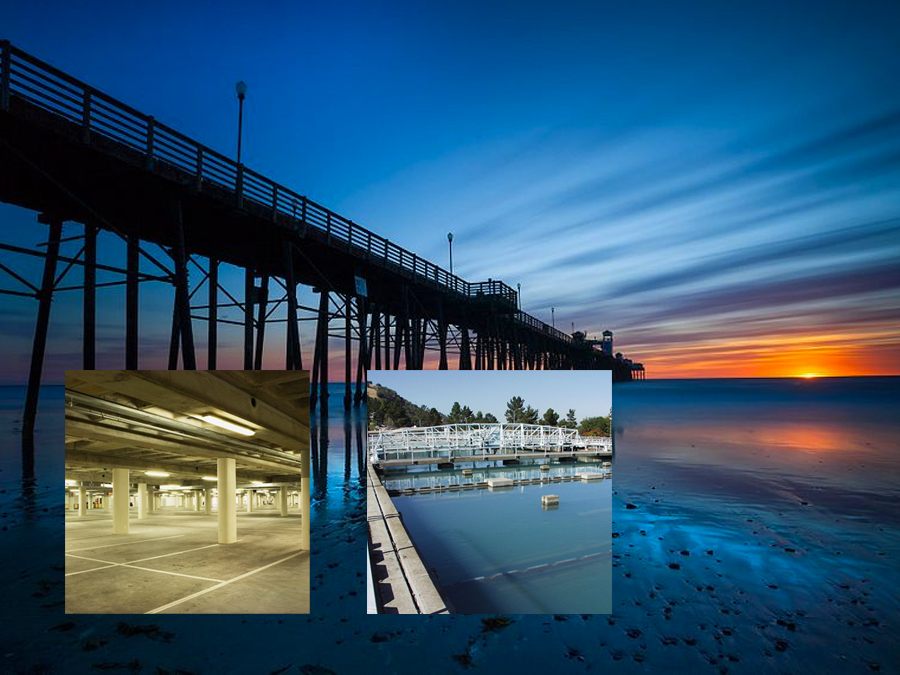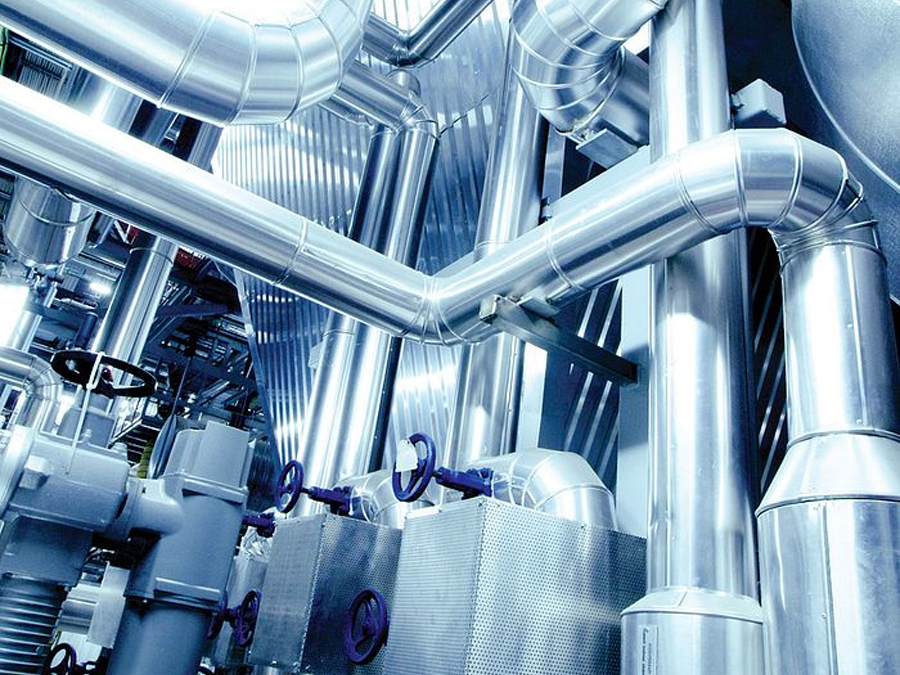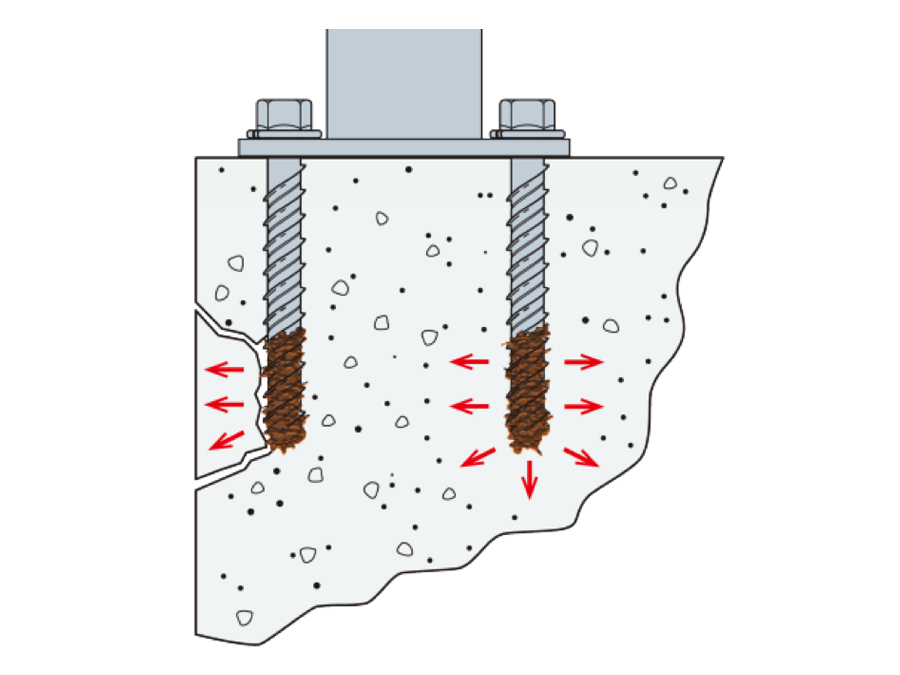

Drill It. Drive It. Forget It.
The Next Era of Stainless-Steel Concrete and Masonry Screw Anchor
Titen HD screw anchors are a trusted anchor solution because they offer the performance that specifiers need and the ease of installation that contractors demand. The Titen® HD stainless-steel screw anchor for concrete and masonry sets the new standard for when the job calls for installation in multiple types of environments. It is the ultimate choice to provide fast and efficient installation, combined with long-lasting corrosion resistance for an unsurpassed peace-of-mind.
Watch the Titen HD video
Stainless-Steel Titen HD
Other stainless-steel bi-metal anchors are made by welding a full carbon segment onto the end of the anchor to facilitate cutting. Once installed, the carbon-steel segment embedded in the concrete is vulnerable to rust. As carbon steel rusts, it can expand up to ten times its original volume, cracking and damaging concrete if installed near an edge. The carbon-steel content of the stainless-steel Titen HD has been minimized to cut grooves in the concrete during installation, its mass is too small to cause concrete damage if it were to corrode.
Innovative
The serrated threads on the tip of the stainless-steel Titen HD are vital because they undercut the concrete as the anchor is driven into the hole, making way for the rest of the threads to interlock with the concrete. In order for these threads to be durable enough to cut into the concrete, they are formed from carbon steel that is hardened.
Corrosion Resistant
For dry, interior applications, corrosion associated with carbon-steel is not a risk, but in many kinds of exterior, coastal or chemical environments, the anchor would be vulnerable to corrosion. With the introduction of the stainless-steel Titen HD, there is finally a state-of-the-art screw anchor solution that combines the corrosion resistance of Type 316 and Type 304 stainless steel with the undercutting ability of a heat-treated carbon-steel cutting threads.

Anatomy of the Stainless-Steel Titen HD (THDSS)
Innovative carbon-steel thread effectively cuts the concrete while significantly limiting the amount of carbon-steel in the anchor.
Stainless-Steel Titen HD Applications
For Using in Seating, Catwalks, Machinery, Piping, Railings, and more
Type 300 Series stainless-steel screw anchors have different corrosion-resistant properties for different environments. When matched to the appropriate environment and application, anchors made from Type 300 Series stainless steel will resist the effects of corrosion and maintain their strength and integrity. Type 316 is the optimal choice for applications in corrosive or extreme environments such as salt water, or when chemical or corrosive solutions are present. Type 304 is a cost-effective solution for less extreme applications where the environment may be wet, moist or damp.

Type 316 stainless steel
- Wastewater treatment
- Fertilizer storage buildings
- Sill plates in coastal environments
- Marine/port restoration
- Light rail (transportation)
- Parking structures
- Tunnels
- Balconies in coastal environments
- Outdoor railings in coastal environments

Type 304 stainless steel
- Stadium seating
- Curtain walls
- Clean rooms
- Central utility plant facilities
- Food-processing facilities
- Ledger bolts for decks
- DOT signs and fixtures
- Agricultural facilities
- Cooling towers
- Pulp and paper mills
- Scaffolding
- Parking structures
- Tunnels
- Balconies
- Refineries
- Breweries and wineries
- Fencing
- Outdoor railings
Learn More on Structural Engineering Blog
Why You Should Specify Stainless-Steel Screw Anchors When Designing for Corrosive Environments
I was driving under a concrete bridge one nice clear day in Chicago, and I happened to look up to see rusted rebar exposed below a concrete bridge. My beautiful wife, who is not a structural engineer, turned to me and asked, “What happened to that bridge?” I explained that there are many reasons why spalling occurs below a bridge. One common reason is the expansion of steel when it rusts or corrodes.

